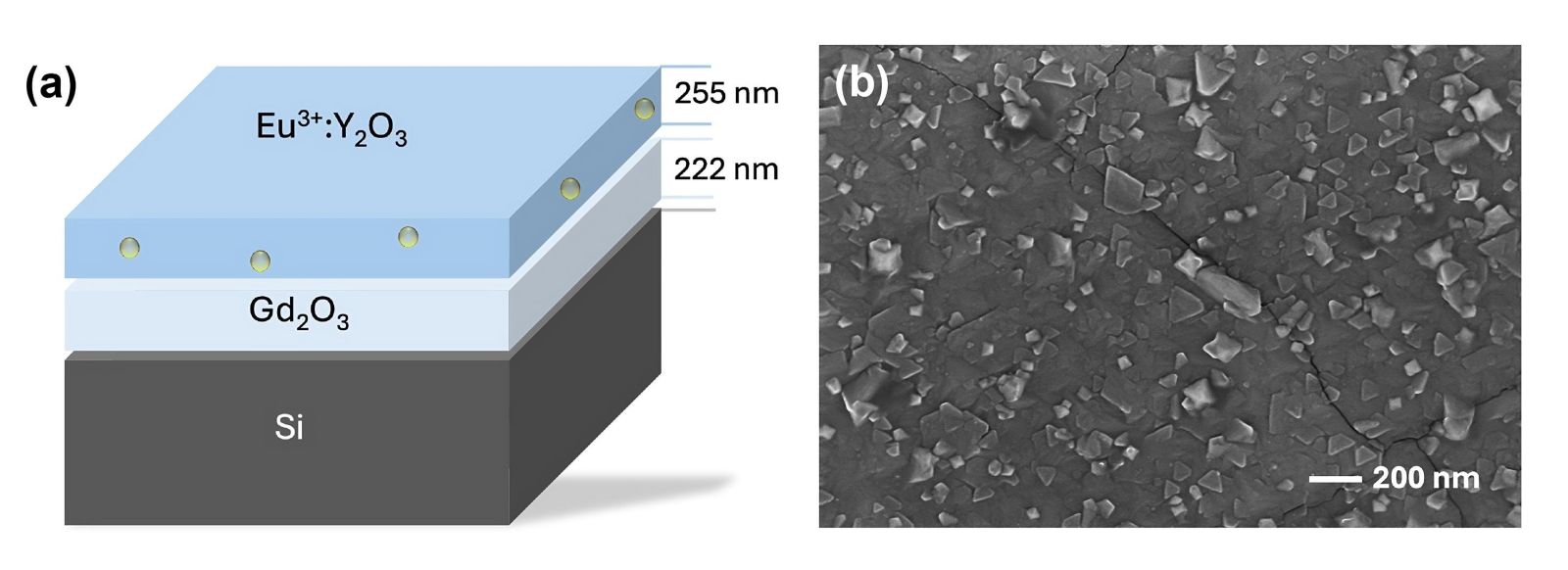Follow us on Google News (click on ☆)

These ultra-thin materials (called "thin films") are made from a mixture based on yttrium oxide with a bit of europium, two "rare earth" elements. Their advantage? They can store quantum information for a sufficiently long duration – about one microsecond – which is very promising for creating compact yet efficient quantum devices.
But what exactly are we talking about?
Quantum technologies aim to harness certain astonishing properties of matter to improve how we store or transmit information, far beyond what classical technologies allow. One major challenge is maintaining these quantum information states stable long enough to be usable. For this purpose, certain materials, particularly those containing europium ions, are especially interesting.
The catch is that these materials need to be integrated into highly miniaturized devices compatible with current electronic components, especially those made of silicon (like the chips in our computers and phones). To achieve this, researchers must create extremely thin layers of material while maintaining impeccable quality.
This is where the innovation from the team at the Institut de recherche de chimie de Paris (CNRS/Chimie ParisTech/PSL Université) comes in. They developed a new fabrication technique by combining two sophisticated methods: chemical vapor deposition (CVD) and molecular beam epitaxy (MBE).

Epitaxial thin film Y2O3: Eu 3+ on Gd2O3/Si substrate.
(a) Schematic view of the multilayer structure.
(b) Surface morphology of the Y2O3: Eu 3+ film observed by scanning electron microscopy (SEM).
Using this hybrid approach, they successfully deposited a layer of yttrium oxide containing europium Eu3+ ions onto silicon, with remarkable physical and quantum properties.
A technical but important detail: to achieve this result, they added a thin layer of gadolinium oxide (Gd2O3) between the silicon and the active material. This "buffer layer" improves the film's quality and enhances its quantum behavior.
Tests conducted at very low temperatures confirmed this structure's potential. Researchers measured that the quantum states of europium in this material lasted one microsecond – ten times better than previous attempts with the same material and among the best currently achieved in the field. Simply put, they send a light pulse into the material, which is absorbed and then re-emitted, and measure how long it takes to return. This duration gives a good indication of the material's quantum "memory."
This breakthrough opens the door to a new generation of compact integrated quantum devices. They could be used to store or transmit information in the form of light – similar to bits, but in quantum form: optical qubits.
And this is just the beginning: researchers hope to apply their method to other rare earth elements like erbium, whose properties are even better suited for telecommunications technologies.
In short, this advancement brings quantum technologies one step closer to practical, industrial applications. The research can be found in the journal Nanophotonics.